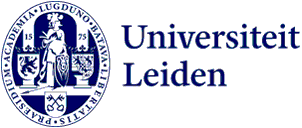Vision on Blended Education
The faculty’s vision
The faculty’s Vision on Blended Education was officially launched at the Blended Education Festival on 5 September 2023. The vision has been formulated by an FSW working group in academic year 2022-23 based on literature review, dialogue with colleagues, focus groups with teachers and students, insights from Grassroots and Grass Shoots projects and surveys.
In higher education, a blend of synchronous and asynchronous learning activities is increasingly common. A blended course can, under optimal conditions, increase student performance, autonomy and motivation and enhance flexibility for students and teachers1. The faculty vision is focused on the need for a strong basic infrastructure and accompanying support for teachers and students to implement blended education when deemed valuable by a teacher and their institute.
Implementing the vision
The implementation advices that followed from the vision are highly interdependent and provide a holistic perspective on education at the FSW – if all are implemented, they represent a picture of our faculty in 2027. Below an overview of the main pillars.

How is blended learning defined in the vision?
Blended learning is an educational design format where digital and in person learning activities are aligned with a didactical objective in mind. Blended learning is a way to activate students in different settings, thereby creating an optimal learning environment. This means that blended education can range from optimally utilizing Brightspace to teach a course, to implementing work formats such as Flipped Classroom or Team Based Learning2.
Join the conversation
Would you like to share your thoughts on the faculty’s Vision on Blended Education or do you have suggestions for successful implementation? Feel free to get in touch with us:
- Laura Schneider. Implementation focus: Teachers, Students, Organizational structure (contact with LLInC and Faculty Office)
- Rosanne van den Berg. Implementation focus: Knowledge structure (Faculty Network on Education and Innovation, Grassroots and Grass Shoots), Support staff, Building & infrastructure.
Notes:
1 Means et al. (2013) and Wu, Tennyson & Hsia (2010); geciteerd in Last & Jongen (2021). Blended learning en onderwijsontwerp: van theorie naar praktijk, p.28-29.
2 For definitions of blended learning and flipped classroom, see Remote Teaching Support.
